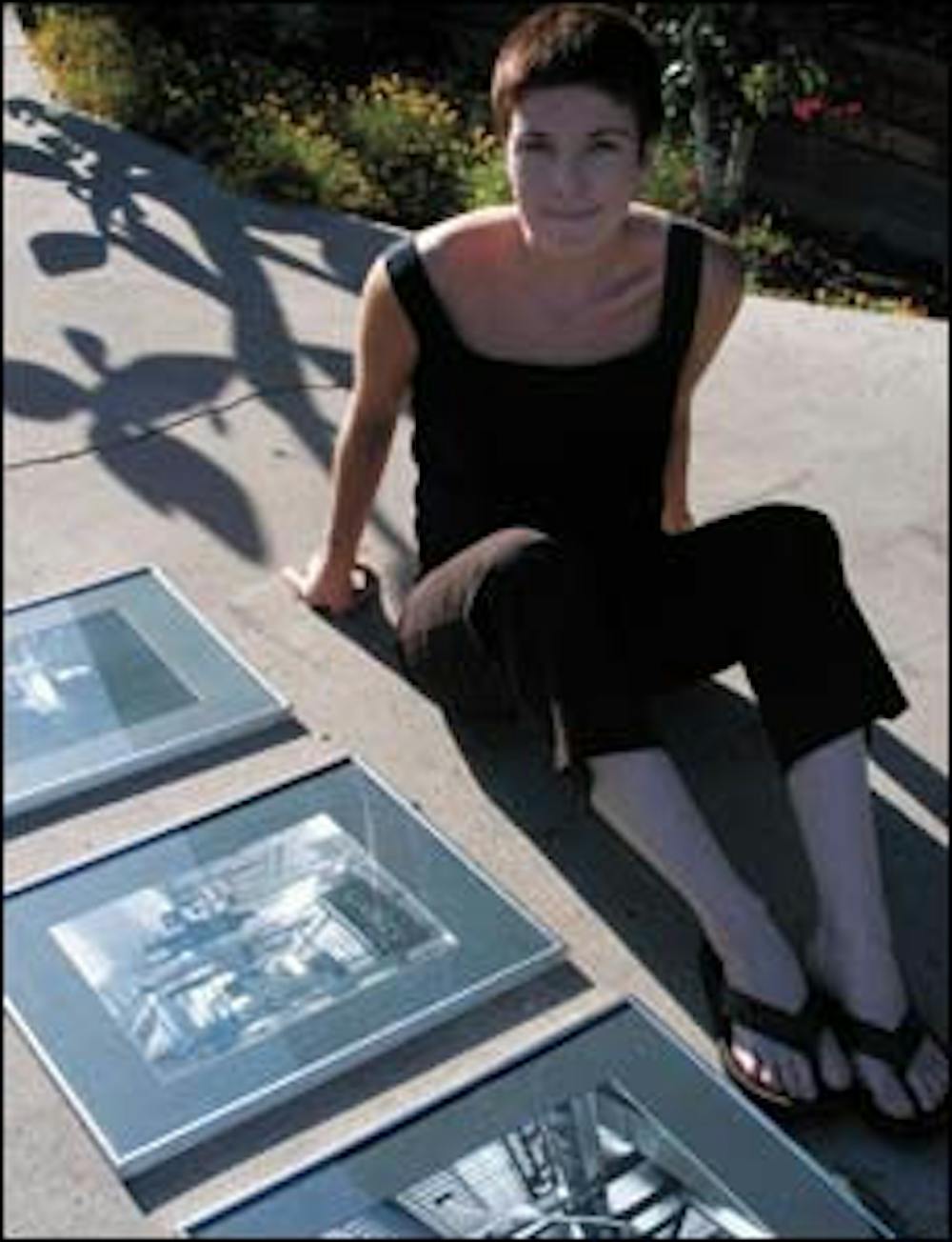Liana Mcwhorter is a daughter, a girlfriend, an artist, a student, and ultimately a human being. However, Mcwhorter regrettably says there is one significant facet of her identity that sometimes overrides all others - Mcwhorter is a lesbian.
"There is so much more to me as a person, but being a lesbian always attracts the attention," Mcwhorter says.
By creating black and white photographs based on female sexuality, like women locked in holy matrimony Mcwhorter says in her current art she attempts to share slices of her lifestyle with the an audience that in many cases, is still scared of diversity. "I'm pulling things out of myself instead of the world around me," she says. Mcwhorter's socially charged photography will be displayed at Starbucks, which has raised a few eyebrows and conflict for Mcwhorter, until mid-May.
SPM: What kind of photographic art do you create?
Mcwhorter: In general, I do shoot a lot of cityscape photography. Mainly from San Francisco, New York and Chicago. Cityscapes pretty much make up my portfolio right now. The stuff at Starbucks is more about women and sexuality. There are a couple of racy pieces up right now.
SPM: What is racy about them?
Mcwhorter: One is of two girls getting married and they're both in their wedding dresses. Another is of two girls kissing. And I'm actually getting a little heat about that one right now.
SPM: How come?
Mcwhorter: The district manager asked if it was a guy and a girl kissing. I asked if it would make a difference and he said, 'Yes, it probably would.'
SPM: Really?
Mcwhorter: He asked me to take it down and I'm refusing. I feel a little singled out. I'm going to try and take the proper steps to keep it up, if they'll let me.
SPM: What inspires you to create this feminine-oriented art?
Mcwhorter: The art is based on my experiences being a woman and dealing with different pressures from society not only as a woman, but also as a lesbian. I want my art to reflect the normal lives of gays and lesbians. We're just as normal as everyone else. If you look at that lesbian wedding picture, it looks like any other wedding.
I'm trying to pull stuff out of my own life. I don't want to push it in people's faces, but at the same time I don't want to be invisible. We're not invisible.
SPM: What can people gain by peeking into your life?
Mcwhorter: They can see that there are different kinds of lifestyles out there. For me, photography is like a diary. Many people want to write a book about the story of their life. Well, this is how I'm doing it.
SPM: Does it mean a lot to you to be able to convey the lesbian perspective through photography?
Mcwhorter: Yeah. It's important to show this side of life. Although [being lesbian] doesn't make the whole of me, it is a part of me. I think it's important for people to get exposed to diverse images, whether it has to do with sexuality or race or anything else.
SPM: Why is it so important for people to be exposed to diverse images?
Mcwhorter: A lot of people are scared to approach anything that is even somewhat controversial. It's natural to be scared of difference.
Brandon: [Note: Brandon, who is gay, is Mcwhorter's roommate and was sitting in on the interview. He interrupted with a few interesting points.] These kinds images are important because the gay and lesbian movement have been silent for so many years. We had a voice, but every time we've used it, it has been silenced. When you throw images like Liana's up in a public place, you're expressing the voice to an audience that otherwise would never hear it.
SPM: So, do you feel your photography is a part of a gay movement?
Mcwhorter: That is where I'm aimed right now, but I never thought I would do this kind of work. I used to be into just cityscapes. There's a big movement out there and I've only got a taste since my foot has been in the door. I feel like my voice has finally arrived through this art. I used to feel like I was just taking a picture, now I feel like I'm speaking out. I'm interacting with my art.
SPM: How is the gay and lesbian movement in Tempe?
Mcwhorter: It's been out a little more since the two girls got married at ASU, but it's silenced a little, too. Overall, it is struggling in the Phoenix area.
SPM: Where do you want to take this art in the future?
Mcwhorter: I'd like to get on working for a magazine. I want to see my work dealing with sexuality go more mainstream, so it's not seen as just an 'alternative' lifestyle. It's kind of like the, 'Don't ask don't tell policy.' People will accept the lifestyle if they don't have to deal with it. I still get looks when I walk down the street holding hands with my girlfriend.
Reach the writer at matthew.garcia3@asu.edu.




